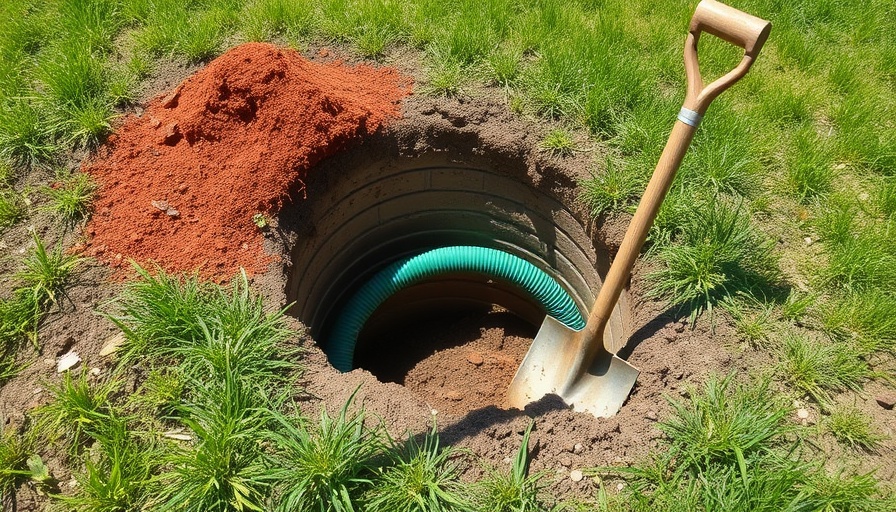
Unlocking the Secrets: How to Find Your Septic Tank
For homeowners, the septic tank is an essential yet often overlooked component of the property. Knowing its location isn't just a matter of convenience; it’s crucial for maintenance and preventing costly repairs. Whether you plan to perform routine upkeep or anticipate comprehensive landscaping, understanding how to locate your septic tank is a vital homeownership skill.
The Basics of Septic System Layout
Typically situated underground, septic tanks are part of an independent waste treatment system that separates solid and liquid waste for treatment. They vary in size based on household needs and can be made from various materials. Familiarity with your septic system's layout can drastically decrease potential accidents, such as damage from digging or completely blocking the tank’s access.
Initial Clues to Locate Your Septic Tank
Start by checking your property's records, which may be stored at your local health department. Often, your home’s blueprints or any existing permits will indicate where the septic tank is buried. Ideally, you should also know approximate measurements, such as tank length and depth, which can significantly aid in your search.
Physical Indicators of Your Septic Tank's Location
Not all properties provide explicit records. Therefore, knowing how to visually identify signs of a septic tank can be helpful:
- Access hatches: Look for manholes or risers, generally located in yards or gardens, often marked by a slight protrusion from the ground.
- Vegetation Patterns: Healthy patches of grass in certain areas could indicate nutrient-rich soil due to leachate from the tank.
- Ground Elevation: Ground that is slightly raised can indicate the presence of a septic tank below.
Utilizing Modern Technology for Tank Location
With evolving technology, finding your septic tank can be streamlined. Ground-penetrating radar (GPR) is one notable innovation. This device uses radar pulses to image the subsurface, allowing you to visualize where your infrastructure lies beneath your yard. Homeowners can also benefit from septic service professionals who utilize specialized tools to locate the tank quickly and accurately.
Local Norms and Understanding Soil Types
Factors like soil composition in your area can influence the type of septic system in use, impacting its location. Understanding local norms can help provide context. For instance, rocky terrains might have tanks placed deeper in the ground, while sandy soils might favor shallow installations. Research your local guidelines, as they can offer insights into typical tank locations in your neighborhood.
Importance of Regular Maintenance and Awareness
Once you've pinpointed your septic tank, establishing a regular maintenance schedule is crucial. Homeowners are encouraged to have tanks inspected and pumped every three to five years to prevent overflows and other complications. Recognizing septic signs, such as slow drains or foul odors, can also prevent further damage.
Conclusion: Take Charge of Your Septic System
Your septic system is an essential aspect of your home, requiring attention and care. Understanding its location enables better management and prevents costly repairs. Whether using traditional methods or innovative technology, knowing how to find your septic tank empowers you as a homeowner. Make your way to maintain and care for this critical system; your property—and wallet—will thank you.
If you need expert help or advice on septic tank maintenance or detection, consider reaching out to a local contractor with proven experience in this field. They can provide comprehensive insights and ensure your septic system stays in optimal condition.
 Add Row
Add Row  Add
Add 




Write A Comment